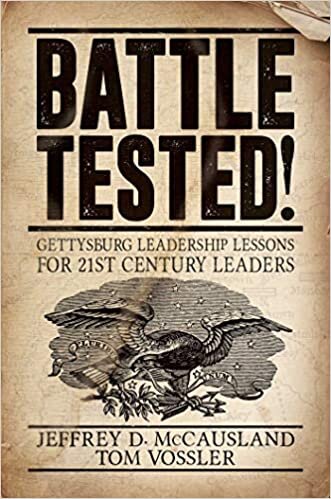Audio read by Dr. Jeff McCausland
excerpt written by Jeff McCausland and Tom Vossler
LEADERSHIP AND INNOVATION
Media proprietor Steve Jobs is quoted as saying that “innovation distinguishes the leader from the follower”. Although the words he spoke were targeted at 21st century corporate leaders, they are meaningful in the analysis of 19th century military history, specifically the battle at Gettysburg.
Portrait of Jonathon Letterman
Thus far in our narrative we have introduced Union cavalry commander John Buford and his innovative decision to use dismounted versus mounted tactics by his cavalry to protect the key terrain behind him for occupation by friendly forces and take advantage of the carbines that his men carried. Rather than screen the key terrain from advancing Confederate forces, he chose to defend the ground forward of it by fighting dismounted – a non-traditional cavalry role. He was therefore innovative in the deployment of the troops he had available, doing other than what his opponent expected and contrary to the conventional wisdom of the time.
The first day’s battlefield provides us with several other illustrations of the dynamics of leadership and innovation. Jonathon Letterman, Chief Surgeon of the Army of the Potomac will have already and unknowingly, conformed to the later dictate of 20th century leadership guru Peter Drucker who is quoted as saying: “innovation is change that brings on a new level of performance”. In the months prior to Gettysburg, Letterman re-designed and re-formed the medical organization and procedures of the Union Army of the Potomac which, in the end, preserved the lives of many wounded soldiers.
Effective leaders seek to encourage innovation throughout their organization and create a climate that underscores its importance. Organizations “innovate” by changes in organizational structure, new products, or new processes. As a result, leadership and innovation go hand-in-hand.
Successful organizations innovate when placed under stress. An army at war is no exception, and wars historically bring about rapid innovation in treating injuries. Since the onset of the war on terrorism the American military has undergone dramatic innovation in treating wounded soldiers. This has included the ability to rapidly evacuate casualties, treat mental injuries such as post-traumatic stress disorder (PTSD), the development of prosthetic devices to replace lost limbs, traumatic brain injury (TBI), etc.
This was also true during the American Civil War. A graduate of Philadelphia's Jefferson Medical College, Johnathan Letterman joined the regular army as an assistant surgeon in 1849. In April 1862 he was named medical director for the entire Army of the Potomac with the rank of major. Commanding General George McClellan gave Letterman broad authority to do whatever was required to revamp the poor medical services that troops were receiving.
Letterman came up with numerous innovations and is now known as the “Father of Modern Battlefield Medicine,” and he effected all the changes inherent in innovation — new product, new process, and new organizational structure. In terms of “new products,” he reinvented the then current horse-drawn field ambulance to the extent that it was a new product. His improvements to the vehicle included the addition of a spring suspension system between the wheel axles and the body of the vehicle and adding a rigid canvas-covered overhead wooden framework from which stretchers could be suspended to further cushion transportation of patients over rough roads or fields.
Image from the National Museum of Civil War Medicine
His “new organization” was the re-organization of the Ambulance Corps placing the ambulances and evacuation system under control of the army's medical department rather than civilian contractors. Under his organizational design this allowed wounded soldiers to be more efficiently and quickly evacuated, from collection points behind each regiment to field dressing stations at each brigade or on to field hospitals established behind the line of battle for each division and army corps.
Finally, and perhaps most importantly, Letterman came up with a “new process” that revolutionized the treatment of mass casualties. It became known as “triage” and is a method of sorting out arriving injured based on their need for immediate medical treatment as compared to their chance of benefiting from such care. In essence, casualties are sorted into three groups: (1) soldiers who are clearly going to die and should be consoled; (2) wounded whose injuries might require some minimal effort so they can await more in-depth treatment; and (3) casualties who if operated on quickly stand a good chance of recovery. “Triage” is used even today in hospital emergency rooms and during wars or disasters. It allows medical resources to be efficiently allocated to maximize the number of survivors. During World War II American General Omar Bradley declared “triage” to be the most important innovation in modern medicine.
Parts of this article are excerpted and adapted from Battle Tested! Gettysburg Leadership Lessons for 21st Century Leaders written by Jeffrey D. McCausland and Tom Vossler. Book is available now! Order your copy at: https://bit.ly/battletestedbook.




